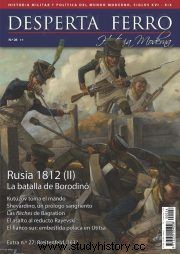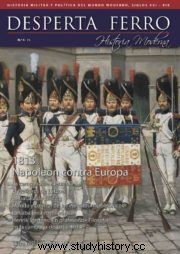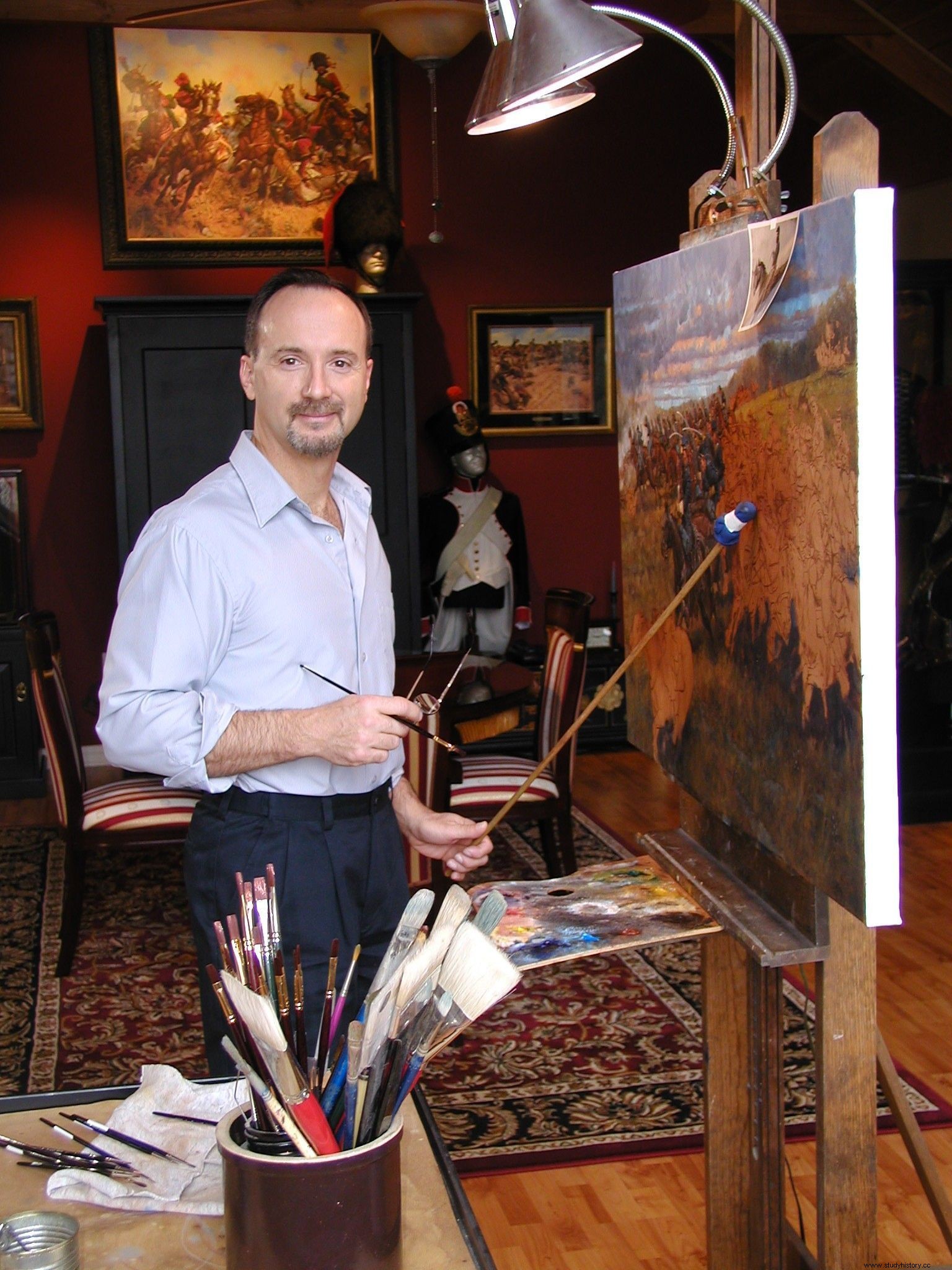
Where did the interest of him for the painting?
Since I was a child I have always been good at drawing, but it was my father who instilled in me a taste for art. I remember his great interest in the artists of the Italian Renaissance, the first great masters I came to know. I couldn't have been more than 8 years old, but without realizing it I began to learn the importance of using chiaroscuro when developing shapes and environments. The next thing I remember is feeling seduced by painting, one of those things with which you naturally empathize or not. In my case, the amazement that someone could create a work like this aroused the desire to do something for myself.
Do you remember your first painting?
It must have been around 1968 or 1969 when my parents gave me a box of oil paintings for Christmas. I would have been 13 or 14 years old and until then I had only worked with charcoal or colored pencils. Our family didn't have many resources, so I had to do my first paintings on the back of wallpaper. What disasters!
Historical genre painting requires precise documentation. What is the process you follow before starting work?
My work system can be defined as extremely traditional and methodical, the same one used by Meissonier and all those who followed him. For example, when creating a multi-figure painting, I follow these steps:After identifying the subject, I read as many first-person accounts of that episode as I can find, as well as its historical context; Next, I draw a sketch with the composition I have in mind and, immediately afterwards, I continue collecting information, this time about the terrain, the architectural elements and, of course, the clothing and uniforms.
When I've done all of this, I bring in a real model, dressed in the most realistic clothing I can find, and have them pose like the figures in my sketch and photograph them. I retouch the images in case there is a need to add more movement to poses that are sometimes static, and when I redraw the captured images I have the possibility to correct any distortion generated by the camera lens.

Once these individual drawings are finished, I place them according to the sketch in a full size drawing. I stick the drawing to the canvas or wood panel, go over it with a tracing paper, whereby the chalk line is transferred to the canvas or paper. Since the chalk doesn't hold up if turpentine falls on it, I go over the drawing again, this time using dark ocher or Van Dyke brown. Now the strokes are stable on the canvas and at that point I'm ready to paint.
What materials and techniques do you use when you paint?
I always work with oil paints from different manufacturers. I usually have 10 colors plus white on my palette for work.
As for methods, the one that best suits my personality is the alla prima method. . If I have an idea in my head that excites me, I like to start painting as soon as possible to take advantage of the fact that my motivation is at its highest point. I think the method alla prima It allows you to do just that, not having to wait a couple of days for base coats or glosses to dry.
With this kind of urgency to start painting comes the possibility that changes in composition or color will have to be made, but oil painting is very welcome. Despite being opaque, it allows last minute changes. Of course, there is also the added benefit of the color brilliance of oil paints.
A good example of this is the horse in the lower left corner of Marshall's Crossroads. In the drawing, the size of the horse appears in proportion but when I was half painting on the canvas, it seemed that the horse was very small. I enlarged the drawing, went over it again on the canvas and painted a new horse over the old one.
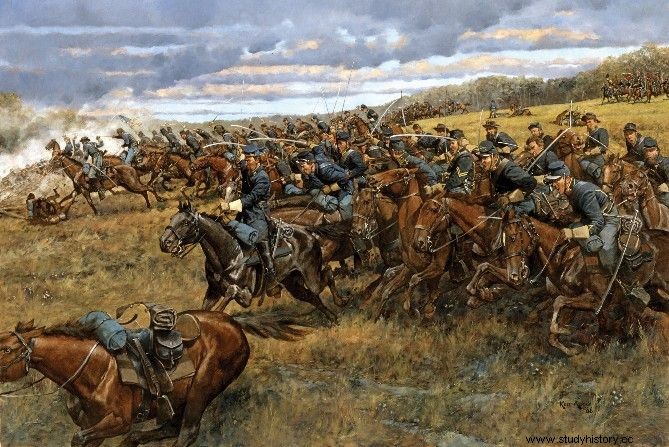
As for the way of drying paints, I do not use any means to extend or shorten the time. I only use linseed oil from the paint tube itself and to dilute it, turpentine, which makes the paint dry the day after it has been painted. The areas with the highest concentration of white titanium can take a few days but I usually paint a thin layer of paint, so the job is usually dry within 10-12 hours.
In this way, I have to complete an area and stop at a specific place to continue the next day without any color differences. For example, I would try to complete the sky of a painting on the same day so that I don't have to mix new paint with dry paint the next day.
My favorite step in the process is to start putting paint on the canvas. That's when the color palette and the feeling for painting is born and it's very exciting for me to see it develop.
Does any of your work have a special meaning for you?
I think that many of my paintings have become icons linked to my name, probably because they are the works that helped create the first steps of my career and that gave me recognition with the public. Two of them could be "Through the Cornfield" and "A Chasseur's Fate".

A work that has a special meaning for me is “The Rear Guard” because it was an idea that I had in my head for years and I never had time to work on it. In the end I reserved two months of work to develop and paint this piece. I was very happy with the final work and the painting hung in my studio for about 10 years, hidden from the public, until someone came to the studio, saw it and bought it.
Which artists have influenced you?
The list of artists that have influenced my work is very long, especially in my childhood. Michelangelo, Titian, Vermeer, Rembrandt and Lautrec could be some of my earliest influences, to name a few.
But when, in the early 1980s, I made the decision to go down the path of historical narrative art, there was a core group of artists that I kept coming back to to study their work. These artists are Jean Louis Ernest Meissonier, Howard Pyle, Alphonse Marie deNeuville, N. C. Wyeth, Jean Baptiste Edouard Detaille, and Frederic Remington.
Is there any historical period or topic that especially attracts your attention?
Certainly, the Napoleonic period is my favorite for its inexhaustible variety of clothing and color. You can say that my comfort zone is from the middle of the 18th century to the Second World War. It is in these periods that I feel most comfortable and, in a way, I know them quite well.
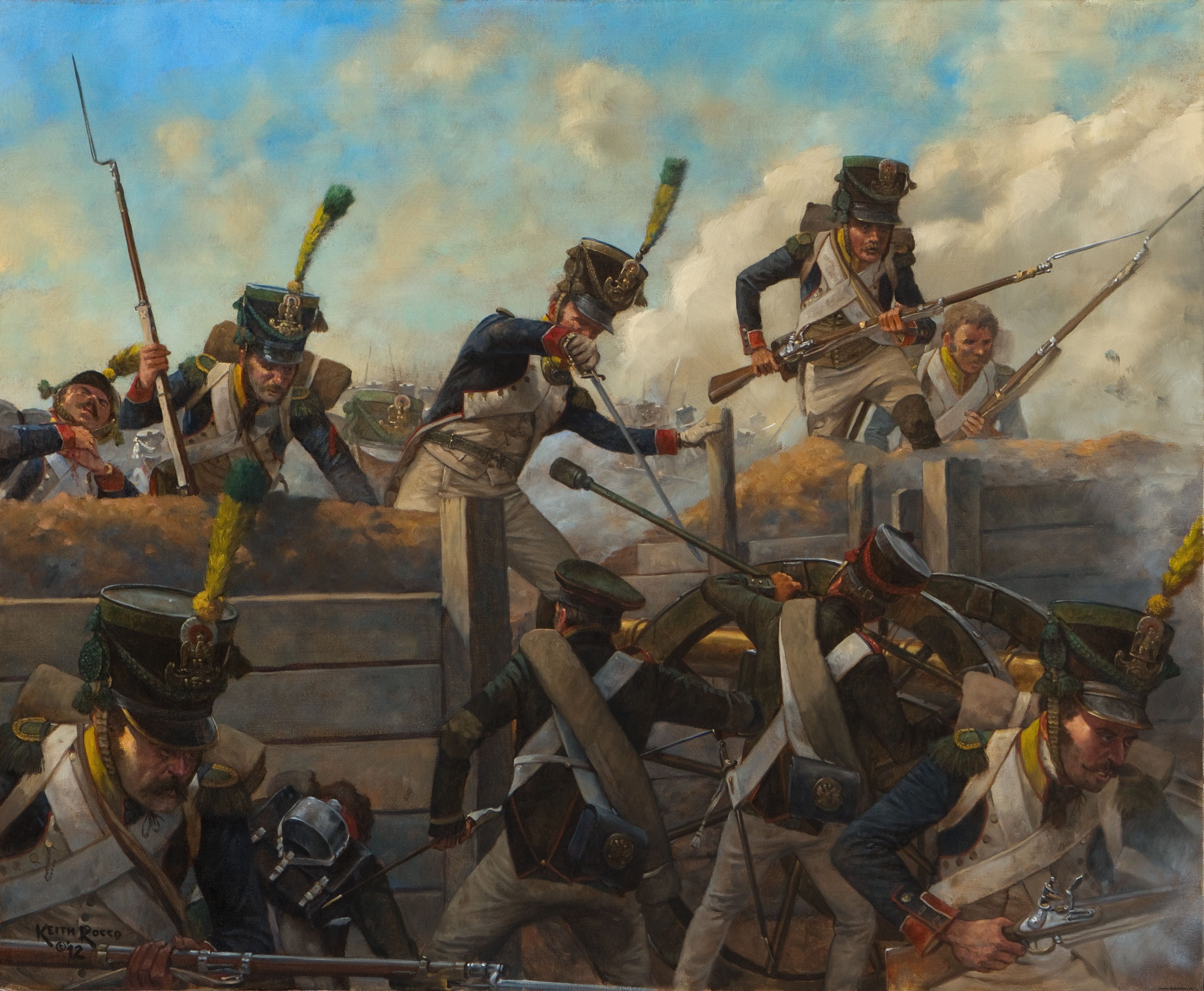

What does the Waterloo campaign mean to you?
The name of Waterloo continues to be synonymous with disastrous defeat for the public
general. But for the historian, both professional and amateur, the 100 days of campaigning that led to the battle and what followed is much more complex, full of intrigue, frantic fervor and despair.
For many decades most of the literature and evidence came from English pens. Today we are very fortunate that many testimonies have been published and translated by those who participated in the campaign in the Belgian-Dutch, Prussian and French forces, which can allow us to have a complete view of the battle. At any moment, any new information is available, especially that of eyewitnesses of the battle, to whom we should sit down and listen.
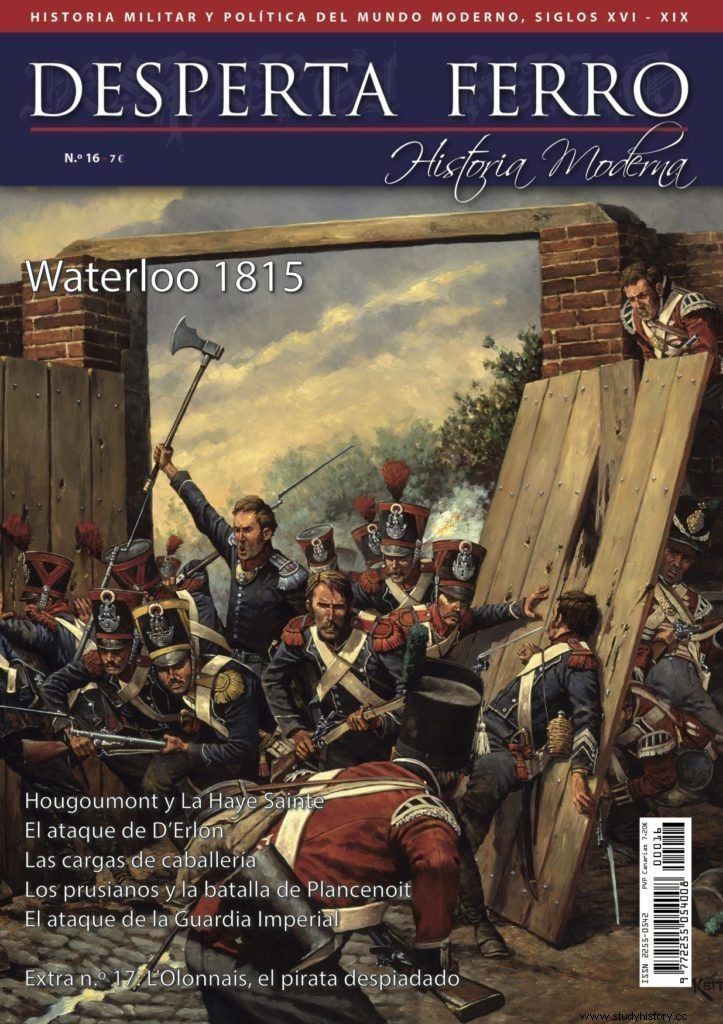 Is it a source of inspiration?
Is it a source of inspiration?
Waterloo will always have a mystique and will ignite the macabre side of our imagination in the same way as other events such as Pompeii, Gettysburg or the Titanic, to name a few. However, the real reason I came back to the Waterloo Campaign was that I contacted an editor friend who told me about Paul Lindsay Dawson. This author has spent decades searching for French material related to this campaign and translating many of these documents for the first time. His discoveries made it possible to put the French army itself into consideration. Furthermore, these recently translated French testimonies were consistent enough to make new illustrations, perhaps allowing new perspectives on a matter that has been repeatedly illustrated over the past 200 years. In addition, in my case, the fact of being from a nationality not involved in the conflict has allowed me to have an impartial view of these new representations.
When designing battles, do you think of soldiers as “killing machines” or as men, full of humanity?
I have always prided myself on telling the story of the ordinary soldier, the often anonymous man who finds himself in extraordinary circumstances.
If you take a look at my work you will strangely find senior officers. My interest lies in the low ranges and filling and showing the viewer the breadth of human emotions in those anonymous faces. War seems to be the only place where all emotions are expressed:fear, heroism, good, evil and sacrifice. The compendium of all these ideas has a great force that has attracted me to military art
How does it feel to reenact the mood in battle, especially in the American Civil War?
In a combat scene, I try to offer the viewer various things. First, a time travel experience; on the other hand, the old method of the War compared to what we know today and finally, but most importantly, an emotional response to the characters of the work. Perhaps that response is sympathy or, on the contrary, another at the end of the spectrum that could lead to disgust.

But the faithful recreation of uniforms and costumes, equipment, buildings and objects from each period makes it easier for the viewer to make that jump to another time and place. The viewer may not know all these objects intimately, but the fact that the author has taken the time to research and include them lends truth to the work, a truth devoid of anachronisms that would otherwise destroy the image. experience of those who see the work.
What trend do you think historical artists will follow?
It is a difficult question to answer. For modern subjects, the ability for anyone to take photos and video could limit the need for a painter to interpret the facts. Even so, I hope that the artist's ability to select what to include and what to exclude in a composition to better tell the story will be the element that will allow historical art to be viable.
Finally, what is your opinion of Desperta Ferro?
I think that those who read this will agree with me that Desperta Ferro is a first-rate publication in terms of content, design and depth in the study of the issues it deals with. What else can be said?
Illustrated books by Keith Rocco:
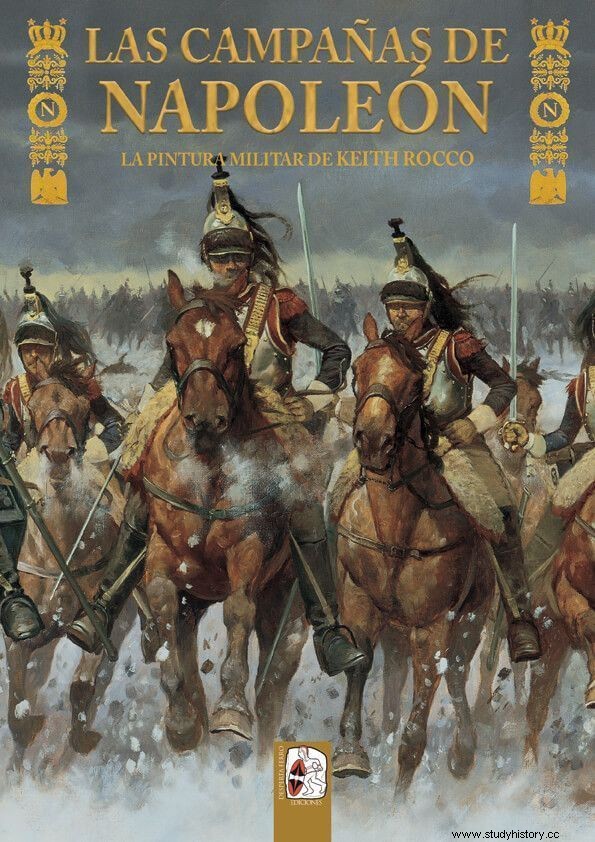 Chartrand, R. and DeLaMatter, M. (2017):The Campaigns of Napoleon . Keith Rocco's military painting . Madrid:Awake Ferro Editions.
Chartrand, R. and DeLaMatter, M. (2017):The Campaigns of Napoleon . Keith Rocco's military painting . Madrid:Awake Ferro Editions.
Cozzens, P. (1994):On campaign:the Civil War art of Keith Rocco . Chicago:Emperor's Press.
Cozzens, P. (1992):This terrible sound:the battle of Chickamauga with illustrations by Keith Rocco. Urbana:University of Illinois Press.
 Girardi, R. I. (2004):The soldiers view:the Civil War art of Keith Rocco . Berkeley, CA:Military History Press.
Girardi, R. I. (2004):The soldiers view:the Civil War art of Keith Rocco . Berkeley, CA:Military History Press.
Girardi, R.I. (2009):The Civil War Art of Keith Rocco . Forest Park:Crimson Books.
Harrington, P. (2011):The Napoleonic Art of Keith Rocco . Osprey Publishing.
Rocco, K. (2013):Napoleon’s First Italian Campaign 1796-1797 . Military History Press.

Dawson, P.L. (2016):Napoleon's Last Army. The French Forces in the 1815 Campaign.
Volume 1. Imperial Guard Cavalry. Lombardy Studios.
More information about works and publications at www.keithrocco.com

